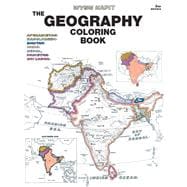
Note: Supplemental materials are not guaranteed with Rental or Used book purchases.
Purchase Benefits
What is included with this book?
THE CONTINENTS.
1. The Hemispheres and Earth Zones.NORTH AMERICA.
3. The Countries.SOUTH AMERICA.
14. The Countries.EUROPE.
18. The CountriesASIA.
28. The Countries.OCEANIA.
35. Oceania I.AFRICA.
37. The Countries.POLAR REGIONS.
44. The Arctic, The Antarctic.HISTORIC LAND EMPIRES.
45. Persian Empire, Alexander the Great.FLAGS AND REVIEW OF NATIONS.
49. Introduction, Flags and Review of North America.WORLD THEMATIC MAPS.
55. World Climate Regions.COMPARATIVE SIZES OF NATIONS.
66. Largest Nations Compared by Area.INDEX.
Geographical Dictionary.The New copy of this book will include any supplemental materials advertised. Please check the title of the book to determine if it should include any access cards, study guides, lab manuals, CDs, etc.
The Used, Rental and eBook copies of this book are not guaranteed to include any supplemental materials. Typically, only the book itself is included. This is true even if the title states it includes any access cards, study guides, lab manuals, CDs, etc.